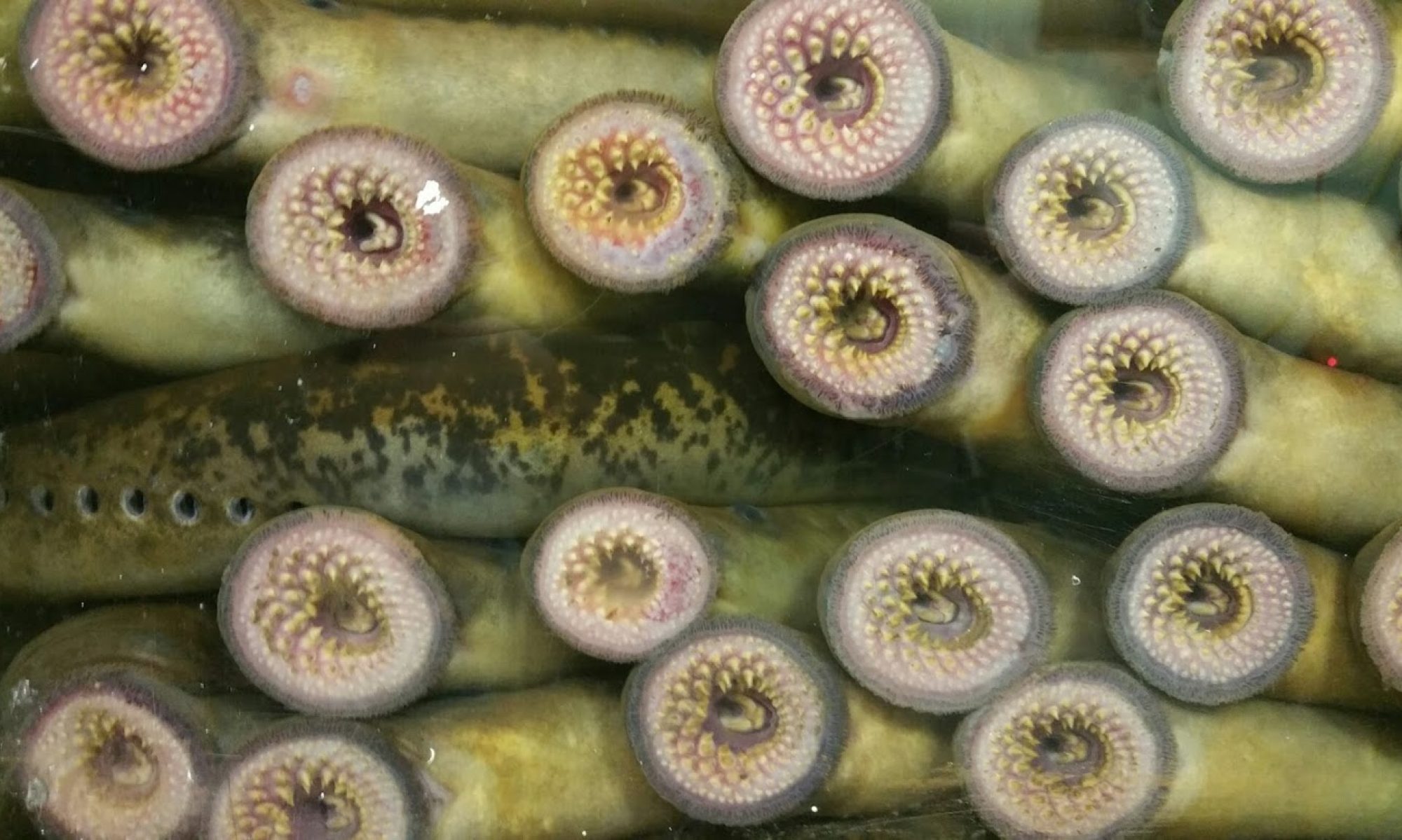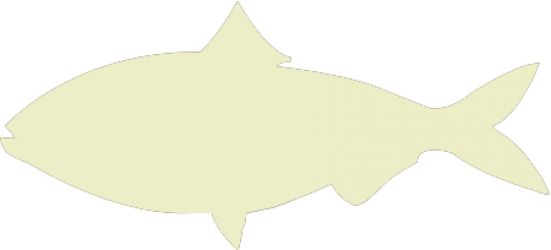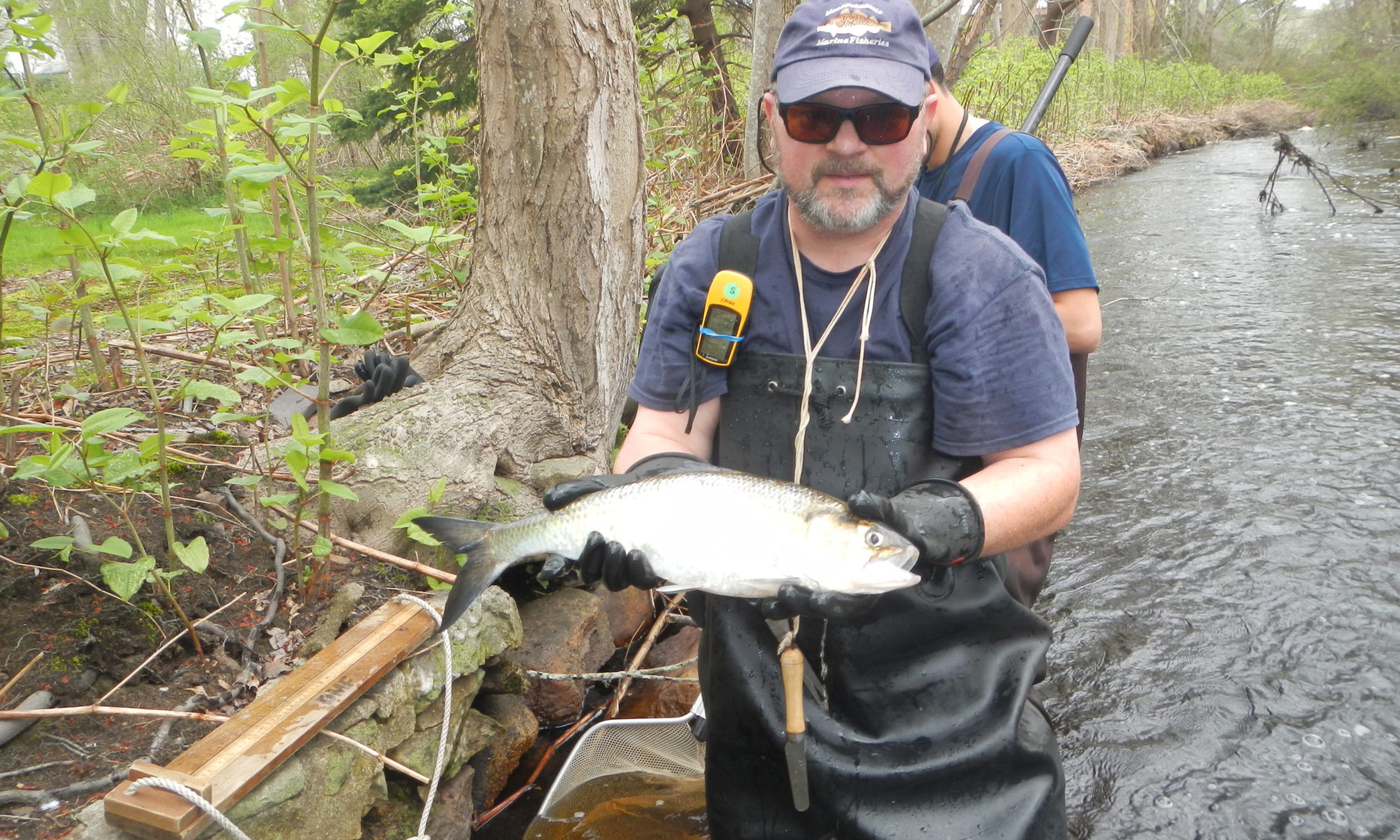All morning I stared at the overcast skies dreading each drop of rain that fell on my windows. I’d been trying to get out in the field for a couple of weeks, but something always got in the way – shipping delays for my waders, rain, swift currents. This was the last chance I’d get for weeks. Normally, fish biologists don’t worry about a little rain when they sample fish, but we wouldn’t be using normal sampling methods. Instead of dragging large nets through the rivers we would be electrofishing, a form of sampling where an electric current is applied to the water to stun the fish and make them easy to collect. If rain is falling there is a risk that the current can find a pathway through the water and shock us.
I left a little early and drove through the dreary weather hoping that we wouldn’t have to cancel. I was on my way to meet up with a crew from the Massachusetts Division of Marine Fisheries (MADMF) to help with their ongoing search for American shad, Alosa sapidissima, in the North and South River Watershed. John Sheppard, a fish biologist with the state’s Diadromous Fisheries Biology & Management Project, has been sampling these rivers for shad since 2016. I ran into him back in January and he offered to take me along once the fish returned to the rivers. The American shad is my favorite fish so I jumped at the opportunity to see them so close to home!
American shad once supported a huge fishery and were a popular food fish throughout the region. They were so abundant and inexpensive that they were called “the poor man’s salmon.” Throughout the late 1900’s fewer and fewer shad were returning to their rivers to spawn. The last coast-wide American shad stock assessment (in 2007) found that the species was at an all-time low with no sign of recovery. Decreases in numbers were reported as far north as Maine and continued south through Georgia. The good news was that shad populations in some states had stabilized, even if they were at low levels. Massachusetts, Connecticut, Delaware, Virginia, and even some rivers in South Carolina and Florida seemed to offer hope. In 2010 Amendment 3 to the Interstate Fishery Management Plan (FMP) for Shad and River Herring was passed, requiring each state or jurisdiction to develop sustainable fishery management plans (SFMPs) to control commercial and recreational fisheries. If a state couldn’t prove that the population in a river was healthy, they were required to shut down the fishery. While the commercial fisheries for shad were already closed in Massachusetts, the SFMP closed all recreational shad harvest except for the Merrimack River and Connecticut Rivers. No current data on the status of shad populations in the North and South Rivers are available. The most recent information on these populations were derived from creel surveys conducted by the Division of Fisheries and Wildlife and the Division of Marine Fisheries during the late 1960’s and early 1970’s. Now, John is attempting to collect the data needed to characterize shad populations in these rivers which in turn will contribute to future stock assessments and management decisions and possibly reopen recreational harvest.

By the time I arrived at the South River, the sun was peeking through the clouds. John usually electrofishes with only two other MADMF staff, Karissa and Nick. But today I was joining them along with Joe Danubio, an avid shad fisherman that I met through the Southeast Massachusetts Chapter of Trout Unlimited. Before we could head into the river John gave us a safety briefing on the Smith-Root LR-24 Electrofisher, a compact but powerful way to access fish in waters too small for a boat or too cluttered to drag nets.

We loaded up our gear and hiked to our entrance to the river. The mud was so deep that I sank up to my calf with each step, struggling to move one foot after the other until my boot stayed behind as I went forward! Not my finest moment. The river itself has a pebble/boulder bottom, so we couldn’t sink once we reached the water. We carefully maneuvered our way through the river around large boulders, broken tree limbs, and discarded tires as we made our way to the starting point.

Within minutes we had our first catch, a small American eel (Anguilla rostrata). The American eel is another native species that exhibits diadromy, more specifically the species is catadromous. The adults live and grow in freshwater, swimming out to the Sargasso Sea when they are ready to spawn. Adults never return back to the rivers. Instead, small leptocephalus larvae hatch from eggs and drift through the oceans back to the home rivers. As they reach the river mouth they transform into glass eels and swim upstream where they will feed and grow for years. The small eels that we caught were probably only a year old.

Shad may seem small, but they are powerful swimmers when they need to be. We continued moving up river and the water began to churn as shad swam into our electric field. They were so desperate to get away that they swam at top speed in any direction. When those 3-pound fish hit you it feels like a cannonball being hurled at your stomach. We quickly swung our nets into the water desperately trying to catch them. Even in their stunned state they are not easy to catch.

Each fish contains an incredible amount of information. You can learn where its been, what it eats, how old it is, who it is related to, how fast it grows, how many eggs it can spawn, and so much more; but getting that data can mean sacrificing the life of the fish. For this study, John is using techniques with minimal risk of harming the shad – length (in fork length and total length), an anal fin clip, check if male or female, and take several scales from the side of the fish.

Those scale samples will be used to estimate the age of each shad. More accurate aging is possible if you examine the otoliths, or ear bones. But to get to the otoliths you need to kill the fish and cut its head open. This is not a good idea for populations which are small and easily affected by the loss of a few individuals. Throughout our almost forty-five minutes of sampling the South River we managed to catch three American shad, two American eel, and several river herring. All fish other than the shad were immediately released.
We quickly packed up our gear and drove over to sample the Indian Head River. The river is a popular destination for fishermen in search of stocked trout, but there is also a dedicated group of fly fishermen going for American shad. To get to our starting point we had to hike along a well-worn path, getting our nets hooked on thorns along the way. Joe told me about a large strip of rubber along the river left by the Eugene H. Clapp Rubber Company, but the ground was too muddy to find it. After getting stuck in the mud earlier I didn’t want to risk doing it again while trying to bounce on rubber.
This river was much wider and deeper than the stretch of the South River that we sampled. It also contained many more shad. We collected a total of seven shad (3 males, 4 females) here, and missed several more. I managed to net three on my own this time. The last fish that I caught was a large female with the most beautiful colors I’ve ever seen on a shad – light blue, yellow, and chrome. She sparkled like a diamond against the dark, green water she had just come out of. Moments like this remind me why I love working with fish.

As we worked our way upstream the current became too strong for us to sample. When the water funnels through an overpass it picks up speed and can become dangerous. We exited the river and re-entered on the other side to continue sampling the pool below the dam. We caught a few more shad in the pool, spooked a bunch of river herring, and even caught a white sucker, Catostomus commersoni.

Despite my worries about the weather, this turned into a great day on the water. We managed to catch and sample ten American shad between the two rivers and see a number of other diadromous fishes. Having these experiences also reminds me how easy it is to forget that the many rivers and streams throughout Massachusetts were once full of aquatic life before the dams and pollution started. The hard work of the biologists at the Massachusetts Division of Marine Fisheries and the Division of Fisheries and Wildlife are beginning to return these public waterways to their former glory, but it will take time and assistance from the citizens of this state.
Update – Electrofishing on 5/11/2018
At the last minute my schedule opened up and I was able join MADMF one more time. The water temperatures have been slowly increasing over the past week, and the shad are arriving in greater numbers. We collected 6 shad in the South River and 33 at the Indian Head River! In addition to the American shad, river herring, and American eels, we caught one of the less beautiful diadromous fish of the northeast – the sea lamprey, Petromyzon marinus. They look like something out of a nightmare and are ridiculously fast when they get shocked! These were about half the size of the ones I’ve encountered in the Connecticut River, but still big enough that I don’t want to swim with them.

I brought along my GoPro to take some videos this time and will update the post as soon as I get the videos edited and uploaded. Here is a teaser:
Acknowledgements
I would like to thank John Sheppard and his crew for allowing me to join their electrofishing surveys. In addition to the added time needed for safety training and acclimatization, they also put up with me as I slowed down the process by continually stopping to take photos throughout the day. I owe you each a drink!


